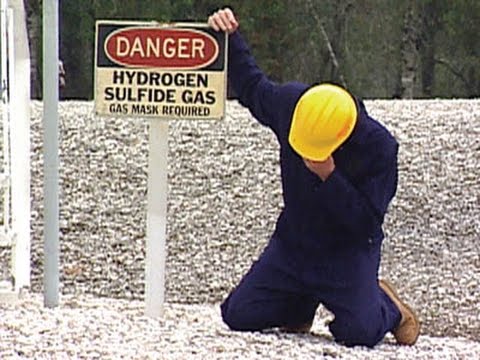
People are normally exposed to hydrogen sulfide in air by breathing it in or by skin/eye contact.Īny absorbed hydrogen sulfide does not accumulate in the body as it is rapidly metabolised in the liver and excreted in the urine. This may especially be the case where acid sulfate soils have been disturbed. Hydrogen sulfide has also been found to contaminate bore water and surface water bodies, usually at low levels, due to bacteria which convert sulfur materials into hydrogen sulfide. In Western Australia some coastal communities have been exposed to hydrogen sulfide generated by the breakdown of seaweed that has accumulated on the shore line. Human activities and industries that may produce hydrogen sulfide include: Hydrogen sulfide occurs naturally in some environments such as sulfur springs, swamps and salt marshes, and is often associated with the decomposition of organic material. Contact us to learn more.Hydrogen sulfide (H 2S) is a colourless gas with a characteristic odour of rotten eggs which being denser than air may pool in low areas in still conditions. Seek to institute engineering controls first, then administrative controls, followed by PPE.Ĭapstone provides confined space rescue services to support our client’s permit required entries. A well-trained staff will have the know-how to protect themselves, but employers still needs proper control mechanisms. However, accidents and fatalities can be prevented. H2S is an unavoidable part of some workplaces and areas. Self-contained breathing apparatus (SCBA).Hazard evaluation by a competent person.The three control methods for protecting the worker against hydrogen sulfide exposure are: Coordination with locally trained professionals trained in confined space rescue At a minimum the PRCS program must have:ģ. A successful program must have several elements in place for complete worker protection. The PRCS entry must be a well-organized part of the safety system of the utility for all aspects of the operations. Not meant for continuous human occupancy.The Permit Required Confined Space (PRCS) is defined as: When a hazardous condition exists, the space must be entered through a permitting system. Utility and Oil and Gas workers often need to enter confined spaces. Death within a few breaths over 100 ppm (IDLH condition).Severe eye and respiratory system effects.The vapors and gases from an H2S fire, such as sulfur dioxide, are toxic.Įxposure to H2S has the following health effects depending on the concentration and duration of exposure: However, when mixed with air, the combination can be explosive if an ignition source is present. Hydrogen sulfide is explosive between the lower explosive limit of 4.3 percent - air is too lean to burn - and the upper explosive limits of 46 percent - air is too rich to burn. Workers must be taught that using their sense of smell to predict H2S danger is not a reliable control mechanism.

However, olfactory fatigue - or loss of smell - takes over at 150 to 250 ppm or during continuous exposure to low-level concentrations. The most widely understood characteristic of hydrogen sulfide gas is the rotten egg smell, which occurs at low concentrations 0.02-0.2 ppm.

You will find most sulfides in the following locations: Sulfides are produced throughout a variety of tanks and areas, especially when a tank or piping is down for repair. It is present in crude petroleum and natural gas it is colorless, flammable and heavier than air, making it incredibly dangerous for exposed workers. Hydrogen sulfide is a naturally forming gas byproduct of decaying human and animal waste. However, the truth is that H2S exposure can be deadly for workers in wastewater, mining, agriculture, textile manufacturing, food processing, and oil and gas extraction. It is the bacterial actions breaking down decaying matter, which produces hydrogen sulfide (H2S) and creates the rotten egg smell. Hydrogen sulfide is more than the rotten egg odor that is smelled around propane tanks.


 0 kommentar(er)
0 kommentar(er)
